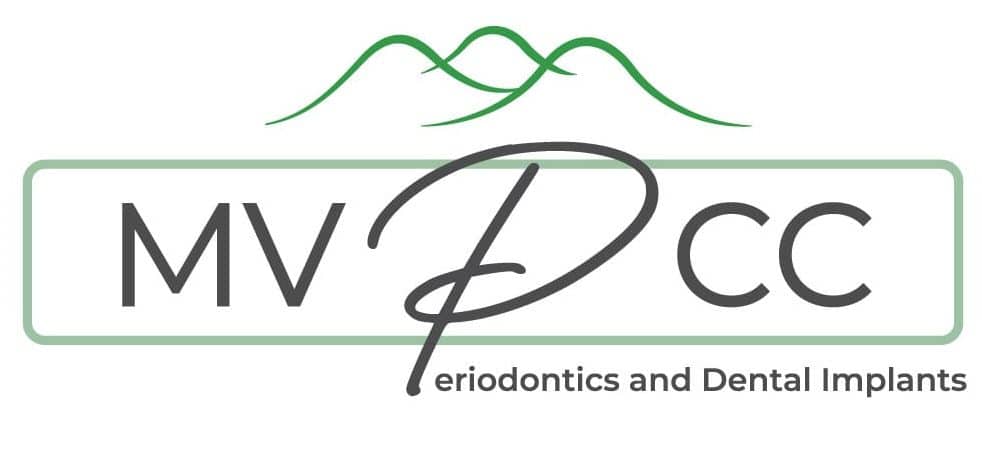Your gums shouldn’t bleed when you brush your teeth, despite what many people think is “normal” – and if you’ve been ignoring that pink tinge in the sink, you might need periodontal disease treatment in Glendale sooner than you realize. Gum disease sneaks up on patients gradually, often masquerading as minor irritation until suddenly you’re dealing with loose teeth, persistent bad breath, or painful swelling that won’t go away. The tricky thing about periodontal disease is that early stages rarely cause significant discomfort, which means many people miss the window for simpler treatments.
At Periodontics of Cherry Creek and Mountainview Periodontics and Dental Implants and Periodontics of Cherry Creek, we’ve seen countless patients who wish they’d recognized the warning signs earlier. Dr. Maryanne Butler and Dr. Amy Riffel specialize in catching these subtle signals and providing targeted treatments that preserve natural teeth and restore oral health.
The Early Warning System Your Mouth Uses
Think of your gums as an early warning system for oral health. When bacteria accumulate along the gumline, your body responds with inflammation – the redness and slight swelling you might notice during your morning routine. Many patients dismiss these changes as temporary irritation from brushing too hard or eating something scratchy, but persistent inflammation signals the beginning stages of gum disease.
Bleeding gums represent your body’s cry for help, even if the bleeding seems minimal or only happens occasionally. Healthy gums don’t bleed from normal brushing and flossing, period. If you taste blood during your oral hygiene routine or notice pink-tinged saliva, bacteria have likely established colonies below your gumline where your toothbrush can’t reach them.
Bad breath that doesn’t improve with brushing, mouthwash, or mints often stems from bacterial colonies producing sulfur compounds in the deep pockets around your teeth. This isn’t the temporary morning breath everyone experiences – we’re talking about a persistent, noticeable odor that affects your confidence in social situations.
When Simple Problems Become Complex Issues
Gum recession creates unsightly “long tooth” appearances that make patients look older than their years, but the cosmetic concerns pale compared to the functional problems recession creates. Exposed tooth roots become sensitive to hot and cold temperatures, making everyday activities like drinking coffee or eating ice cream uncomfortable.
Loose teeth send many patients into panic mode, and rightfully so. When periodontal disease progresses to this stage, the infection has destroyed significant amounts of the bone and tissue supporting your teeth. However, even advanced cases often respond well to specialized periodontal treatments when caught before tooth loss occurs.
Deep pockets between teeth and gums create perfect hiding spots for bacteria to multiply and produce toxins that destroy healthy tissue. Dental hygienists measure these pocket depths during routine cleanings—measurements over 3mm typically indicate developing problems that need professional intervention.
Why Periodontal Disease Treatment in Glendale Requires Specialists
General dentists excel at preventing gum disease through regular cleanings and patient education, but once periodontal disease establishes itself, you need specialists with advanced training and specialized equipment. Periodontists spend additional years studying the complex relationships between gum health, bone structure, and overall systemic health.
The progression from healthy gums to advanced periodontal disease involves intricate biological processes that require sophisticated treatment approaches. Scaling and root planing go far beyond regular dental cleanings, requiring specialized instruments and techniques to remove bacterial deposits from root surfaces below the gumline.
Advanced cases might benefit from LANAP laser therapy, which uses precise laser energy to eliminate bacteria and infected tissue while promoting regeneration of healthy gum attachment. This minimally invasive approach often achieves excellent results with less discomfort and faster healing than traditional surgical methods.
Modern Treatment Options That Actually Work
Non-Surgical Approaches
Most patients prefer starting with conservative treatments whenever possible, and modern non-surgical periodontal therapy has come incredibly far in recent years. Deep cleaning procedures target bacterial colonies between your teeth and gums, allowing your immune system to regain control.
Antimicrobial treatments complement mechanical cleaning by introducing targeted medications directly into infected areas. These localized antibiotics work where toothpaste and mouthwash can’t reach, providing sustained bacterial suppression while tissues heal.
Surgical Solutions for Advanced Cases
Traditional osseous surgery allows direct visualization and thorough cleaning of root surfaces and bone defects when non-surgical treatments can’t access deeply infected areas. While this sounds intimidating, modern surgical techniques prioritize patient comfort and faster healing.
Regenerative procedures can actually rebuild some of the bone and tissue destroyed by periodontal disease, essentially turning back the clock on damage you might have thought was permanent. These advanced techniques require specialized expertise and careful case selection, but results can be life-changing for appropriate candidates.
The Connection Between Gum Health and Overall Wellness
Recent research reveals connections between periodontal disease and systemic health conditions that might surprise you. The chronic inflammation associated with gum disease doesn’t stay confined to your mouth—it affects your entire cardiovascular system, potentially influencing heart disease risk and blood sugar control.
Pregnant people with untreated gum disease face increased risks of premature delivery and low birth weight babies, making periodontal health a critical component of prenatal care. These connections aren’t coincidental – the bacteria causing gum disease can enter your bloodstream and affect distant organs and systems.
Patients with diabetes often struggle with more severe periodontal disease that heals more slowly, creating a frustrating cycle where each condition makes the other harder to control. Breaking this cycle requires coordinated care between your periodontist and other healthcare providers.
Taking Action Before Problems Escalate
Early intervention can make all the difference in preserving natural teeth and avoiding complex treatments. If you’ve noticed any warning signs we’ve discussed, waiting rarely improves the situation and often makes problems more expensive and time-consuming.
Our Parker office and Cherry Creek location provide comprehensive evaluations beyond what general dental checkups typically include. We use advanced diagnostic tools to measure pocket depths, assess bone levels, and identify areas of concern before they become painful emergencies.
Dr. Butler and Dr. Riffel understand that every patient’s situation is unique, requiring personalized treatment plans considering your overall health, lifestyle factors, and personal preferences. We believe in conservative approaches when possible, but aren’t afraid to recommend more aggressive treatments when necessary to save your teeth.
Your Path to Healthier Gums Starts Now
Don’t let fear or embarrassment prevent you from seeking the periodontal disease treatment in Glendale that could save your smile. Modern periodontal therapy focuses on patient comfort while delivering results that can halt disease progression and often reverse significant damage.
Your gums want to be healthy – they need professional help removing the bacterial communities that your daily oral hygiene routine can’t eliminate. Contact us today to schedule your comprehensive periodontal evaluation and discover how specialized care can restore oral health and confidence.

